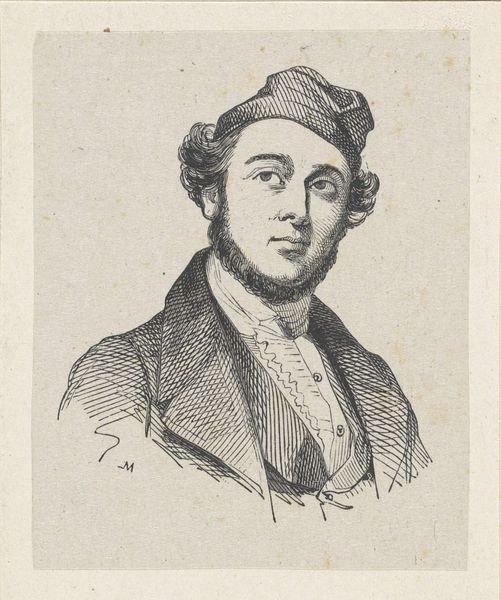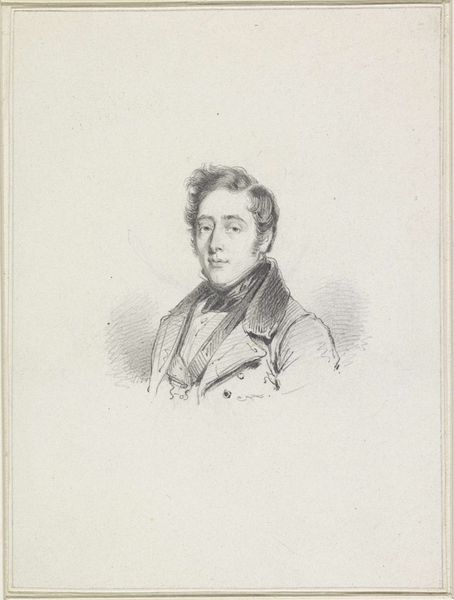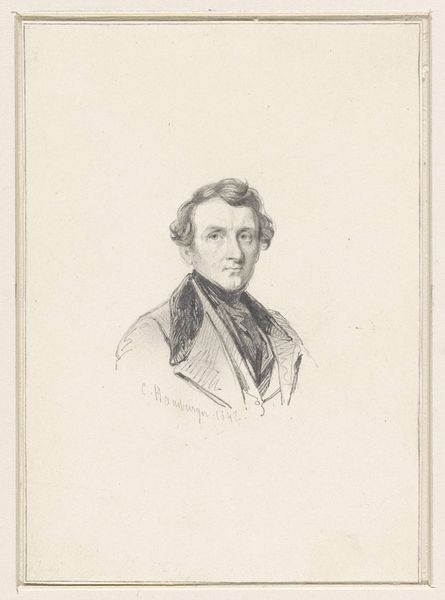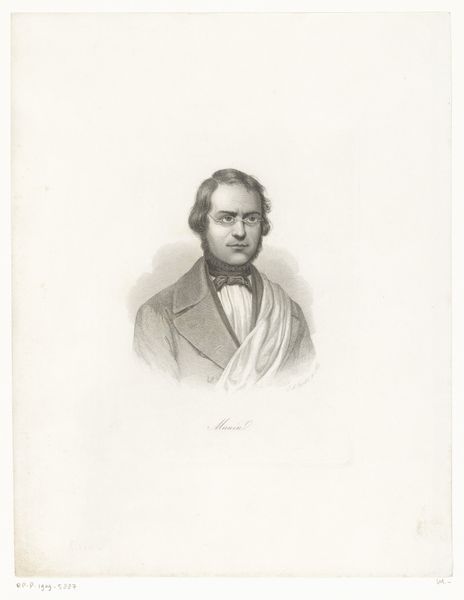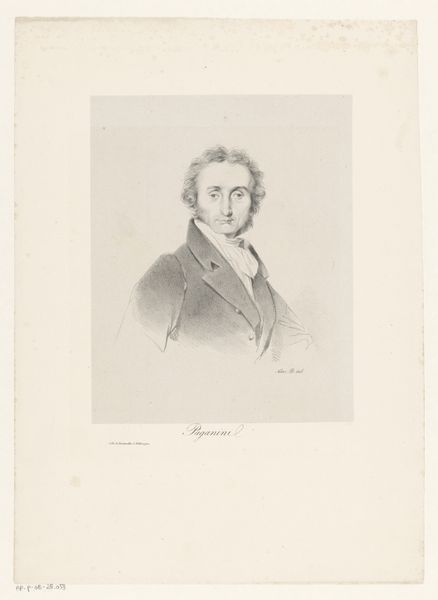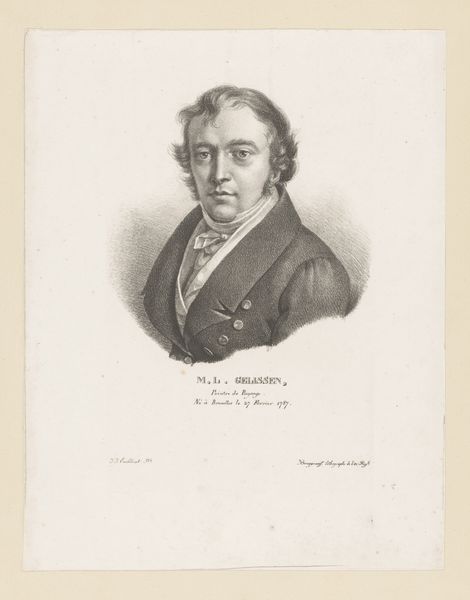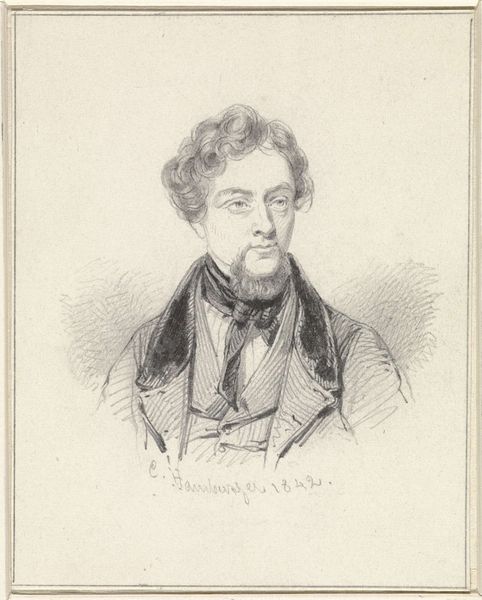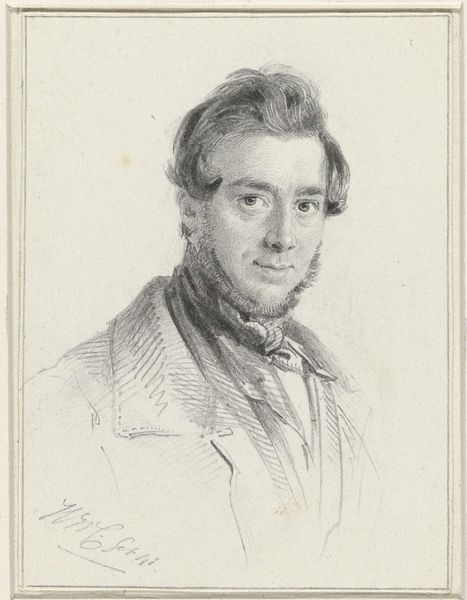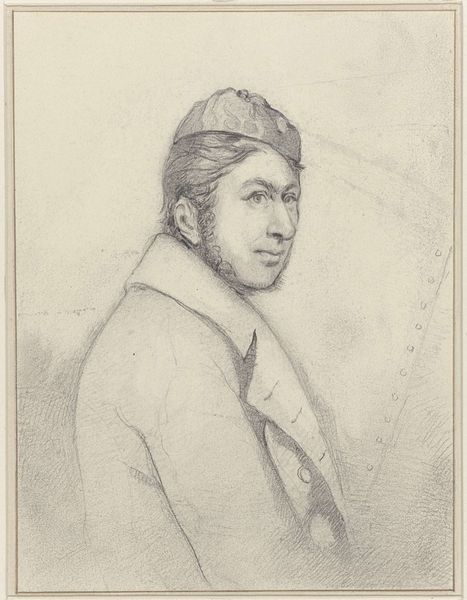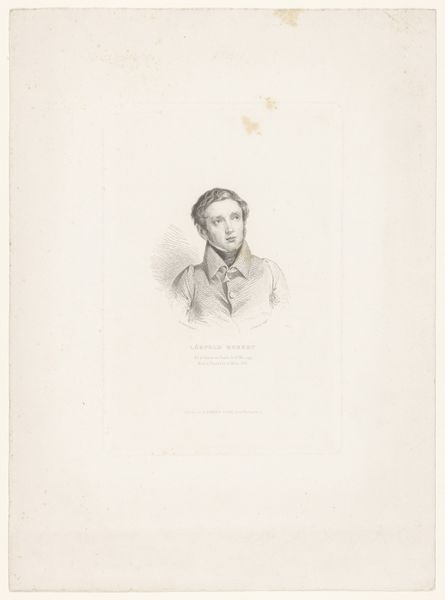
drawing, pencil
#
portrait
#
drawing
#
romanticism
#
pencil
Dimensions: height 113 mm, width 88 mm
Copyright: Rijks Museum: Open Domain
Curator: Welcome. Today, we’re examining "Portret van Petrus van Schendel," a pencil drawing completed in 1841 by Coenraad Hamburger. Editor: My first thought? Melancholy. The soft, almost blurry lines lend an air of quiet introspection. It’s striking how the artist achieved such a depth of emotion using just a pencil. Curator: Hamburger's choice of medium speaks to broader trends. The availability and affordability of graphite pencils during the Romantic era meant that art creation wasn’t limited to elites with access to oil paints. This opened portraiture to a wider audience, reflecting the values of burgeoning middle class. Editor: But consider the meticulous technique! Notice the cross-hatching and delicate gradations in tone—particularly around the subject's face. It’s these formal elements that give the work its character, an interesting harmony between precision and the gentle blurring. Curator: True, but consider also the sitters garb and the role they played in Romanticism, or Schendel specifically; one known to make many nocturnal paintings—it’s the illumination in this piece. Look at where it hits the face and where he obscures certain features, particularly his dress clothes. This suggests how it might have been manufactured. Editor: Agreed, but don’t you think his placement creates a wonderful asymmetry that enhances visual interest? Curator: Maybe. I also notice the slight upward gaze – a standard trope. Was he instructed to look hopeful? The social position comes into play—as though painting isn’t enough to say what’s required here! Editor: Still, despite these conventions, there's an undeniable vulnerability in the subject's expression. Hamburger managed to capture more than just a likeness; he's revealed a trace of something deeply personal within the artist. Curator: I see your point about the emotive quality. For me, it comes down to how art-making itself became democratized. It adds richness that's more than technical virtuosity alone! Editor: Yes. Together, these elements reveal that even simple materials, through skilled manipulation, can render complexity of Romantic personality.
Comments
No comments
Be the first to comment and join the conversation on the ultimate creative platform.
